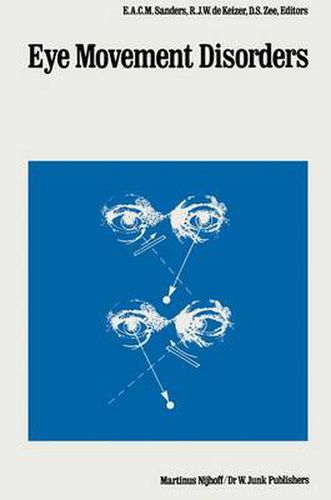Readings Newsletter
Become a Readings Member to make your shopping experience even easier.
Sign in or sign up for free!
You’re not far away from qualifying for FREE standard shipping within Australia
You’ve qualified for FREE standard shipping within Australia
The cart is loading…






There is perhaps no area of neuro-ophthalmology that is advancing more rapidly with respect to an understanding of its anatomy and physiology than the ocular motor system. For this reason, it is difficult not only to keep up with the latest information concerning the basic mechanisms involved in the control of eye movements but also to remain up to date regarding the pathophysiology of specific disorders of eye movement. The material in this book is derived from a two-day course on eye movements held in The Netherlands in 1986. The course was designed as an introduction to the normal ocular motor system and to disorders of eye movements and was aimed toward orthoptists, ophthalmolo- gists, optometrists, neurologists, and neurosurgeons. The chapters in this book were compiled by a trio of experts in the field of eye movements and contain discussions of anatomy and physiology of the ocular motor system, techniques of examination of patients with diplopia, and pathophysiology of specific disorders of ocular motility. Many of the authors of these chapters are among the most active investigators of eye movements in the world today, and their comments thus reflect the latest information in the field. This text is both basic and com- prehensive and thus has something for everyone, from the student just beginning a study of the ocular motor system to the seasoned ‘veteran’ who wishes to know the latest information regarding central ocular motor control mechanisms. Neil R.
$9.00 standard shipping within Australia
FREE standard shipping within Australia for orders over $100.00
Express & International shipping calculated at checkout
There is perhaps no area of neuro-ophthalmology that is advancing more rapidly with respect to an understanding of its anatomy and physiology than the ocular motor system. For this reason, it is difficult not only to keep up with the latest information concerning the basic mechanisms involved in the control of eye movements but also to remain up to date regarding the pathophysiology of specific disorders of eye movement. The material in this book is derived from a two-day course on eye movements held in The Netherlands in 1986. The course was designed as an introduction to the normal ocular motor system and to disorders of eye movements and was aimed toward orthoptists, ophthalmolo- gists, optometrists, neurologists, and neurosurgeons. The chapters in this book were compiled by a trio of experts in the field of eye movements and contain discussions of anatomy and physiology of the ocular motor system, techniques of examination of patients with diplopia, and pathophysiology of specific disorders of ocular motility. Many of the authors of these chapters are among the most active investigators of eye movements in the world today, and their comments thus reflect the latest information in the field. This text is both basic and com- prehensive and thus has something for everyone, from the student just beginning a study of the ocular motor system to the seasoned ‘veteran’ who wishes to know the latest information regarding central ocular motor control mechanisms. Neil R.